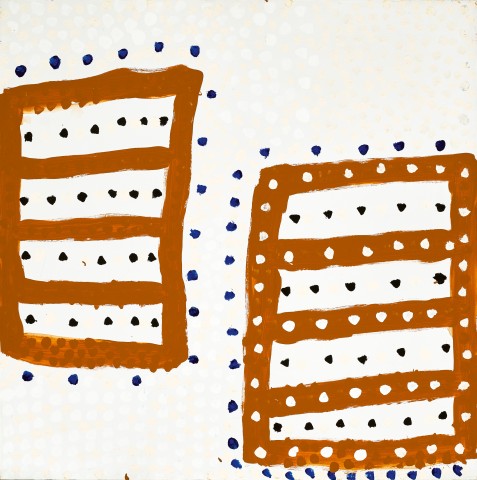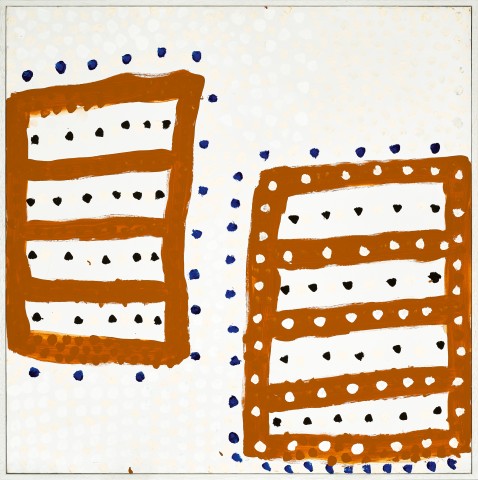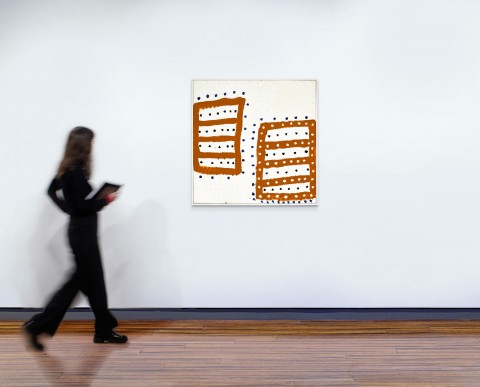BODY MARKS, 1998
PRINCE OF WALES (MIDPUL)
synthetic polymer paint on canvas
102.0 x 102.0 cm
bears inscription verso: artist's name, title, date, size and Karen Brown Gallery cat. PW313
Commissioned by Karen Brown Gallery, Darwin
Private collection, Adelaide, acquired from the above in July 1999
In Larrakia culture the traditional landowners and leaders of ceremonies and dances are referred to as ‘King’. In around 1935, Prince of Wales was born Midpul to Larrakia leader, King George, at Cullen or Kahlin Beach, which at the time was the untouched bay of Darwin. Both parents passed away when Midpul was very young, and he was raised by his mother’s family to become a Law and Song Man. His ceremonial skills were legendary, and he led many public corroborees for international visitors. Significantly, as lead dancer for his people, he led the ceremonial dance for Queen Elizabeth II on her Commonwealth visit to the Northern Territory during the 1970s, and accordingly, from that point onwards, he was forever known as ‘Prince of Wales’. When he suffered an untimely stroke, his ceremonial responsibilities were curtailed, and he took up painting on canvas as a means to ensure that the ceremonial body decorations of his dance and song endured. In 2001, his standing as a Larrakia painter was recognised when he won the Telstra National Aboriginal and Torres Strait Islander Art Award in the Open Painting Category.
Painted on his favoured white ground, Body Marks, 1998 reinforces the ceremonial body decorations that Prince of Wales wanted to preserve in his painting. The alternate-coloured dotting here surrounds and covers the tan-coloured rectangular body design, framing the pattern of blue-black, with subtle tan and white dots together to create an intense energy within the work. These are the markings Prince would have originally painted onto the bodies of his clansmen prior to a ceremonial dance, but here they are transferred as a permanent record for posterity. As Hetti Perkins noted, ‘His paintings have a musicality, imparted by the lively staccato-effect of dots and intermittent bars, which reads like the sheet music for an important symphony.’1 The work was painted just over a year after his landmark solo exhibition of 1997 held at Gallery Gabrielle Pizzi in Melbourne.
1. Perkins, H. and Pinchbeck, C., Tradition Today: Indigenous Art in Australia, Art Gallery of New South Wales, Sydney, 2014, p. 166


